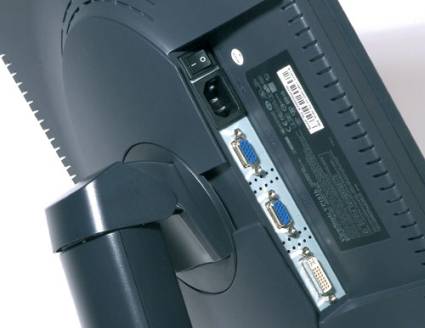Do The New 19" LCDs Pass Muster?
Ergonomics
The two monitors are identical in this department too. The base is adjustable for height, and the panel has a comfortable range of tilt adjustment and a pivot mode, as handy as ever. The OSD is well designed and practical, though we would have preferred to have numeric adjustments in terms of percentage for brightness, contrast and so on. ViewSonic has a long-standing (bad?) habit of not showing the percentage of the adjustment - you have to count the graduations on the cursor on the screen.
Equipment
The unit has triple connectivity - 2 VGA, 1 DVI. Having dual VGA/DVI connectivity is justified, but the interest of having a second VGA connector is debatable. But then, why not? If you happen to have three computers at your house, you'll save a lot of space. The transformer is built in.
Great Color
The panel of the VP191b showed remarkable fidelity, and its MVA technology probably has something to do with that. 97% of the colors were perfect. As a basis of comparison, you can look at the color rendering of the Q19, also an MVA panel.
| Black spot | White spot | Contrast |
|---|---|---|
| 0.34 | 220 | 664:1 |
The black level was very good, and monitors that can go down this far at the calibration point are rare. It's on a par with, for example, the 0.28 nits the MVA panel of the Q19 scored. The brightness is clearly too high, even at 220 nits, but the VP191b still does better than some other panels in this department.
We then measured the stability of contrast when changing the brightness of the panel.
Get Tom's Hardware's best news and in-depth reviews, straight to your inbox.
